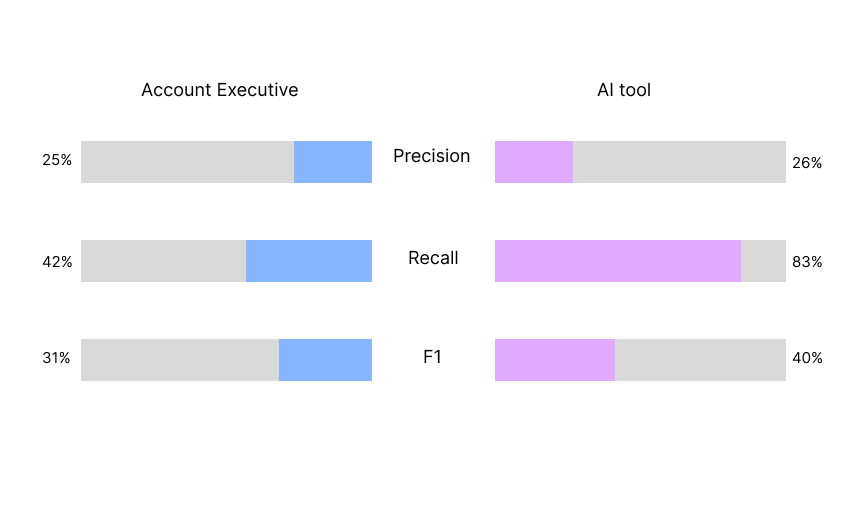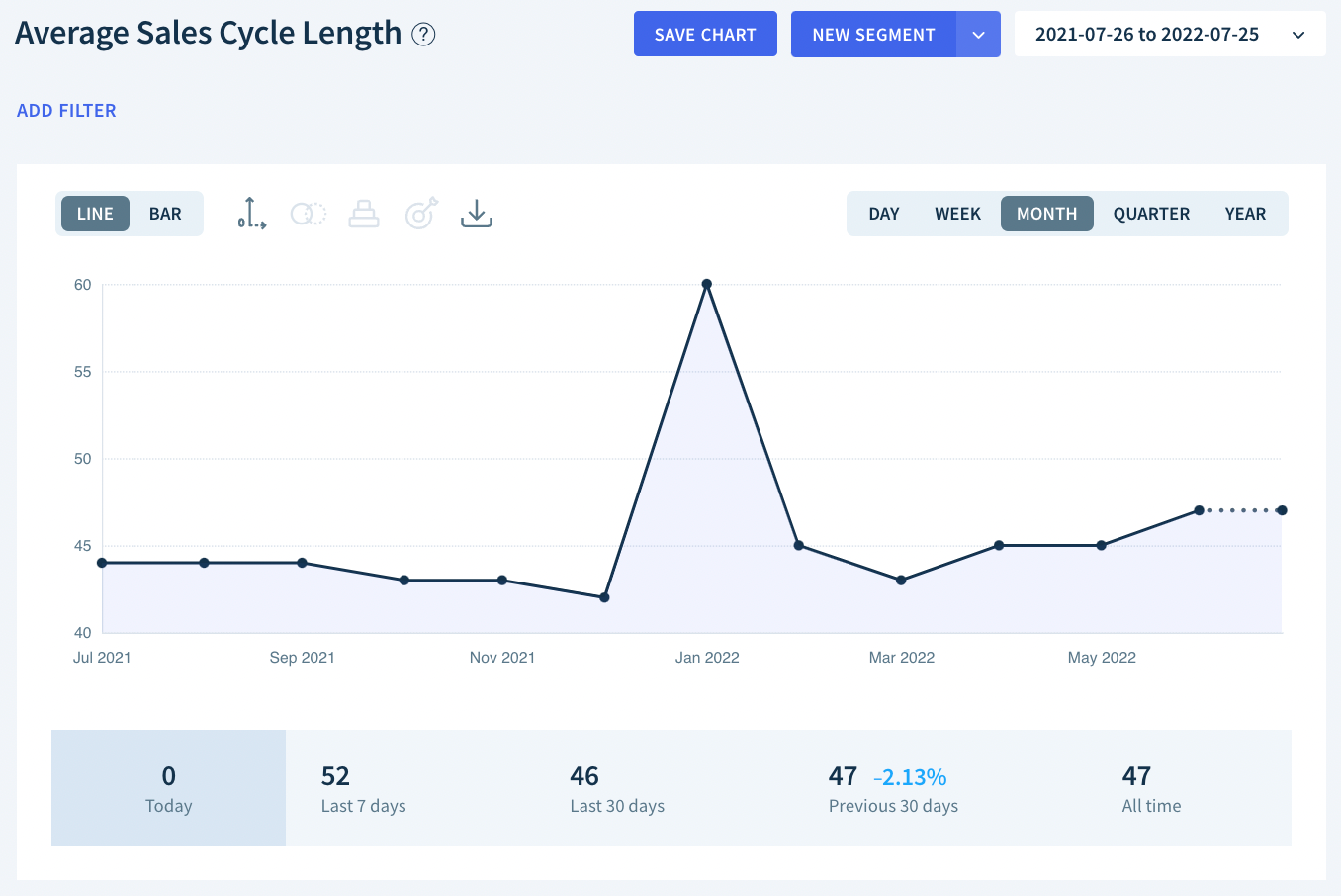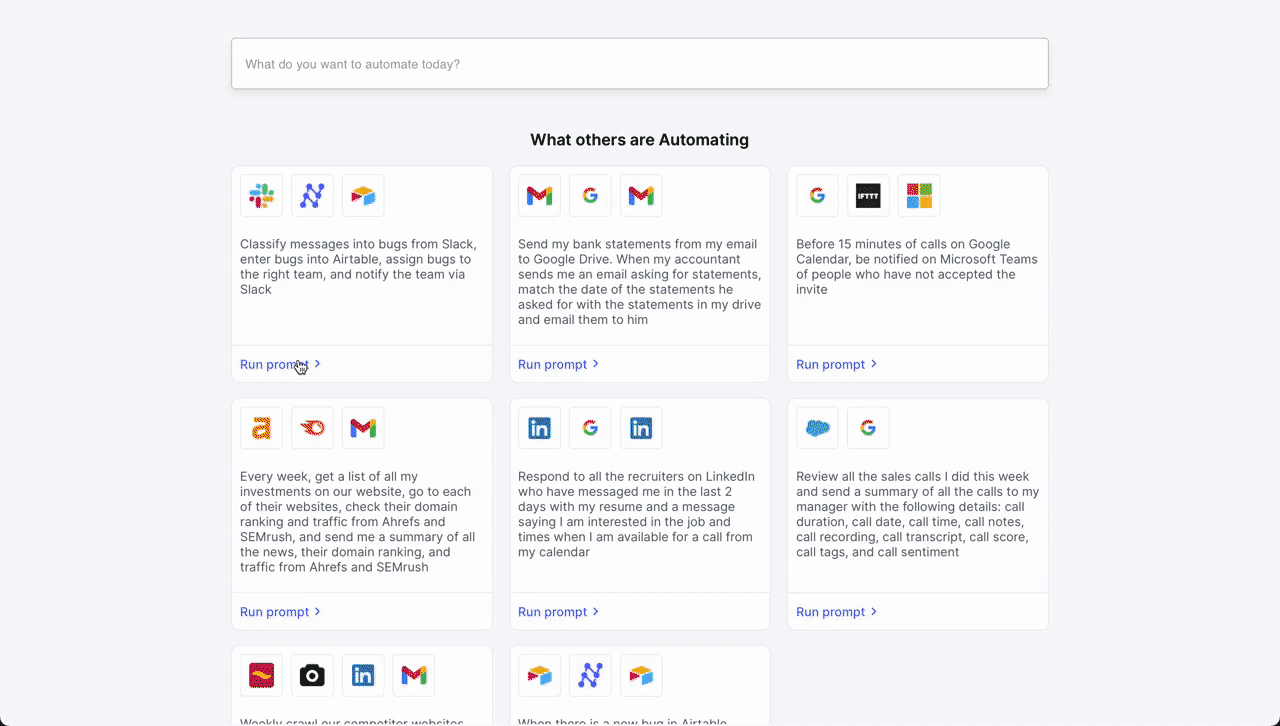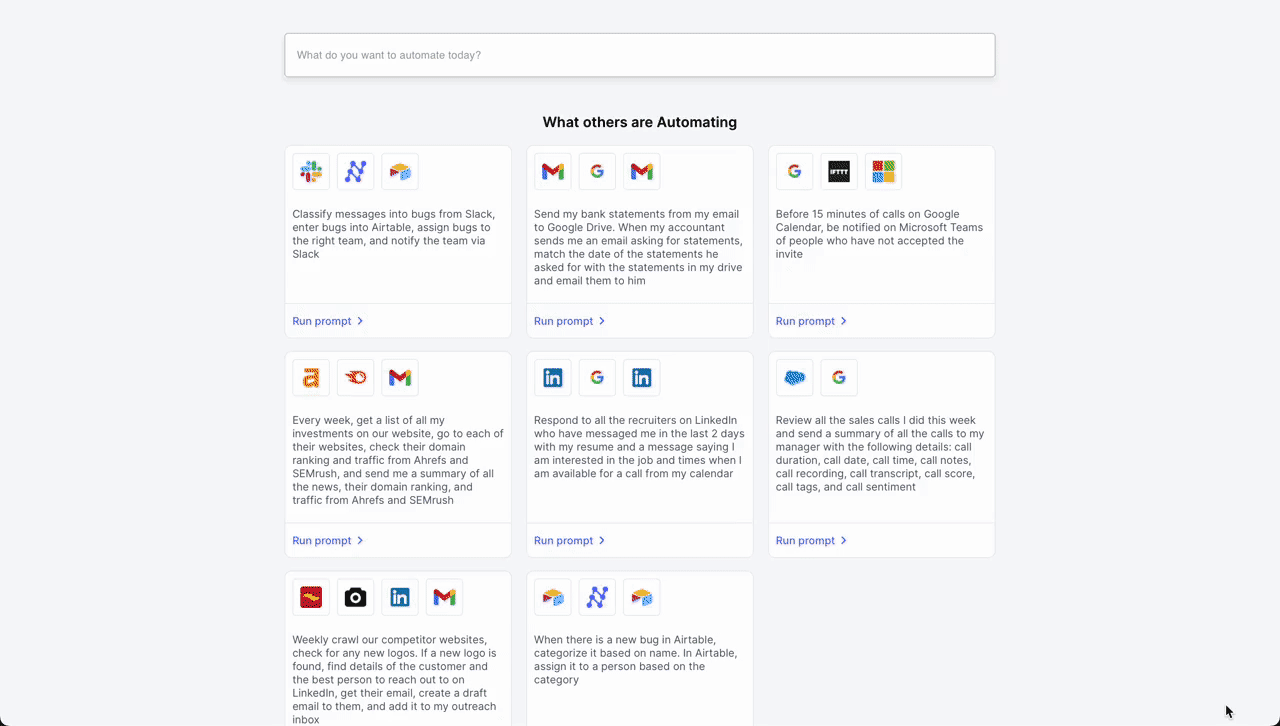In the fast-paced world of sales and marketing, understanding and managing leads is like finding and nurturing hidden treasures. Every lead is a potential customer, but not all leads are created equal. Some are ready to make a decision, while others need more time or information.
This is where Lead Prioritization comes into play. It’s the science of ranking leads based on how likely they are to convert into customers. Just imagine being able to pinpoint which leads are the most promising, allowing your sales team to focus their efforts where they’re most likely to succeed.
We will discuss lead prioritization in this blog, and see how sales teams can create and implement lead prioritization frameworks from scratch. We’ll also explore how Nanonets Workflows can revolutionize this crucial process. We’ll see how workflow automation can streamline your sales efforts, ensuring that your team is not just working hard, but also working smart.
Introduction
Lead prioritization is the backbone of efficient sales and marketing strategies. It involves evaluating and ranking leads based on their likelihood to convert into customers. This process not only improves efficiency but also increases the effectiveness of sales efforts by targeting the right prospects at the right time.
Why is it Important?
- Increased Efficiency: By focusing on high-potential leads, teams can use their time and resources more effectively.
- Higher Conversion Rates: Prioritized leads are more likely to convert, boosting the overall success rate.
- Better Customer Experience: Tailoring the approach based on lead readiness improves customer interactions and satisfaction.
Lead scoring is typically used to perform for prioritizing leads. At its core, it involves assigning a numerical score to each lead, typically on a scale from 1 to 100, to gauge their likelihood of making a purchase.
Modern lead scoring methodologies now incorporate a mix of explicit and implicit scoring metrics, and can also incorporate predictive scoring to build a framework which arrives at accurate lead scores for your leads.
- Explicit scoring involves using concrete information such as job title, company size, or industry.
- Implicit scoring is based on behavioral data like website visits, email engagement, or content downloads.
- Predictive scoring acts as a layer on traditional explicit and implicit methods. Predictive scoring can –
- use AI on the data around your existing customers and your accepted & rejected leads, to give a lead score.
- use LLMs to replace the subjective decision making tasks in the lead scoring workflow.
Automate lead prioritization with our AI-driven workflows, designed by Nanonets for you and your teams.
How to Create a Lead Prioritization Framework
Let’s explore how a sales team can go about creating a lead prioritization framework from scratch.
1. Choose a Lead Scoring Method
Let’s talk about some common ways to score potential customers, which you can use as a lead scoring method in your framework.
Explicit Lead Scoring Methods
These methods use clear and direct information, like demographics, to judge how good a lead is.
BANT (Budget, Authority, Need, Timeframe)
Budget: Checks if the lead has enough money to buy.
Authority: Sees if the contact can decide to buy.
Need: Finds out if the lead actually needs your product or service.
Timeframe: Looks at when the lead plans to buy.
How it works –
- A lead fills out an online form.
- The form’s info is enhanced to learn more about the lead’s company and role.
- The CRM then scores the lead based on BANT, using rules on this extra info.
- Leads with high authority and urgent need get higher scores.
- The CRM updates the lead’s score, marking them as important for the sales team.
Firmographic Scoring
Scores leads based on company details like size, industry, location, and revenue. It’s great for business-to-business sales.
How it works –
- A lead is found on LinkedIn.
- Company info is enhanced for more details.
- The CRM scores the lead based on set firmographic criteria.
- This score helps in sorting leads for specific marketing plans.
ANUM (Authority, Need, Urgency, Money)
Similar to BANT but adds urgency to the mix.
How it works –
- A lead takes part in a webinar.
- Their engagement and questions are analyzed for urgency and need.
- Their role and company are reviewed for authority and budget.
- The CRM scores the lead based on these factors, favoring those with immediate needs and the ability to buy.
Implicit Lead Scoring Methods
These methods look at how a potential customer behaves and interacts with your brand to determine their interest.
Engagement Scoring
Tracks how leads interact with your content, website, and marketing.
How it works –
- A lead often checks marketing emails and important website pages.
- Their actions are tracked and scored based on engagement.
- The CRM updates their score automatically.
- Highly engaged leads are noted for the sales team.
Content Interaction Scoring
Leads are scored based on their interaction with content like blogs, whitepapers, or videos.
How it works –
- A lead reads detailed blogs and watches tutorial videos.
- These interactions are tracked and scored.
- This info is added to the CRM, increasing the lead’s score.
- Leads involved with detailed content are considered high potential.
Predictive Lead Scoring Methods
These methods use AI and machine learning along with traditional methods.
LLM based Lead Scoring
Uses language models to help with scoring in explicit methods like BANT.
Machine Learning-Based Scoring
Analyzes past lead data to find patterns of successful leads. Scores new leads based on how similar they are to these successful profiles.
More on these will be covered later. For our example, let us choose the BANT framework in this step.
Once a framework has been chosen, the next steps are to start preparing your team to seamlessly integrate the framework and create the lead scoring formula.
2. Familiarize Your Team with BANT
Start by educating your sales team about BANT, an acronym for Budget, Authority, Need, and Timeline, and its relevance to your products or services.
- Budget: Understanding the potential customer’s budget is key. It enables you to determine if they can realistically purchase your product or service, avoiding time spent on leads that are unlikely to materialize due to financial limitations. It’s about matching your recommendations to what the customer can afford.
- Authority: Ensure that your team is engaging with decision-makers. This is critical because speaking to the right person, someone who has the authority to approve the purchase, streamlines the sales process. It’s about targeting efforts towards individuals who have the final say.
- Need: Grasping the unique needs or challenges of a prospect allows your team to customize their sales approach, highlighting how your product or service can address those specific issues. This approach is similar to how a doctor diagnoses a patient’s condition to recommend appropriate treatment.
- Timeline: Assessing when a prospect is likely to make a purchase is crucial for lead prioritization and effective follow-up strategies. This knowledge allows the sales team to focus on prospects who are closer to making a buying decision, akin to offering a meal to someone when they’re most likely to be hungry.
3. Guiding Principles for Completing the BANT Form Through Inquisitive Engagement
When delving into each category of the BANT framework, it’s essential to balance sensitivity and thoroughness. The following guide outlines how to effectively pose these queries, including practical examples:
- Budget-Related Inquiries
- Goal: To gauge the prospective client’s financial readiness and interest in investing in your offering.
- Approach: Begin with broad, open-ended questions, then gradually narrow down. Ensure the prospect feels at ease and not under pressure.
- Examples:
- “Can you share the budget range you have in mind for a solution like ours?” This non-invasive question lets the prospect offer a general figure.
- “What was your financial commitment for similar past projects?” This helps you understand their past investment habits and expected budget.
- Authority-Based Questions
- Goal: To identify who makes the decisions and the nature of their decision-making process.
- Approach: Frame your questions to collect information respectfully, without alienating the prospect.
- Examples:
- “Who is the main person deciding on this project, and how can we address their concerns?” This directly identifies the decision-maker while showing regard for their position.
- “Can you describe your typical process for making such purchases?” This provides an overview of their decision-making structure.
- Need-Focused Questions
- Goal: To uncover the specific challenges and needs of the prospect.
- Approach: Use open-ended questions to encourage detailed responses.
- Examples:
- “What challenges do you hope our solution will address?” This prompts an open discussion about their needs.
- “Which features of our offering are most relevant to you?” This helps prioritize features that interest the prospect.
- Timeline Queries
- Goal: To understand the urgency and planned schedule for purchasing and deploying the solution.
- Approach: Be clear yet accommodating to the prospect’s timeline and constraints.
- Examples:
- “Is there a particular timeline you have in mind for this solution’s implementation?” This clarifies their urgency or planned schedule.
- “Are any external factors, like events or fiscal periods, affecting your decision timeline?” This considers outside influences on their timeline.
Additional Strategies for Effective Communication
- Establish Rapport: Build a connection before starting with BANT questions to make the prospect more open.
- Active Listening: Pay close attention to their answers, which can lead to more insightful follow-up questions.
- Customize Questions: Tailor your queries to the industry, company size, or the individual’s role to demonstrate your preparedness and genuine interest.
- Flexibility: If a prospect seems reluctant to respond, adjust your approach or revisit the question later.
- Practicing Through Role-Play: Engage in role-play to simulate sales dialogues, helping your team to ask the right questions confidently.
4. Crafting a BANT Form
Creating a BANT form effectively means choosing appropriate data fields for each BANT component to ensure precise and efficient information collection. Let’s explore the potential choices for each component.
Budget:
- Pre-set Range Options: Offer predefined selections such as ‘<$10,000’, ‘$10,000-$50,000’, ‘>$50,000’, etc., to swiftly classify leads by their budget.
Authority:
- Multiple Choice Queries: These are suitable for determining the contact’s role, with choices like ‘Decision Maker’, ‘Influencer’, ‘End User’, ‘Consultant’, etc.
- Layered Selection: Useful if the decision-making chain is complex, this option assists in pinpointing the contact’s level in the hierarchy, such as:
- Executive Leaders (e.g., CEO, CFO, CTO)
- Department Chiefs (e.g., IT Head, Marketing Head)
- Team Supervisors/Managers
- Individual Contributors
Need:
- Tick Boxes: Enables leads to identify from a list of typical issues or requirements your product/service can solve, also providing a percentage of coverage.
- Intensity Scale: To measure how crucial or immediate each need is, using categories like ‘Not Important’, ‘Somewhat Important’, ‘Very Important’.
Timeline:
- Single-Option Selection: Utilize radio buttons for a clear, one-choice pick of a timeframe, with set intervals such as ‘Within 1 month’, ‘1-3 months’, ‘3-6 months’, ‘6 months or more’, aiding in assessing the urgency.

5. Incorporating BANT into Your Sales Strategy
- Incorporate BANT into CRM: Embed fields for BANT in your CRM tool to effectively monitor and assess potential customers.
- Consistent Monitoring and Refreshing: Make sure your team consistently refreshes the BANT details in the CRM following their interactions with prospective clients.
6. Evaluate Lead Quality with Lead Scoring
Lead scoring involves assigning varying importance to different BANT (Budget, Authority, Need, Timeline) elements, resulting in a cumulative score that represents the lead’s overall qualification. This scoring is influenced by your sales strategy and past data. For instance, if Budget is often a decisive factor, it should have a greater weight. Similarly, if Authority level is critical, its weight should be increased.
For example, in the context of software solution sales, the weighting might be as follows:
- Budget: 30 points
- Authority: 25 points
- Need: 25 points
- Timeline: 20 points
Then, establish the criteria for awarding points within each category. For example:
- Budget: Above $100,000 gets 30 points, between $50,000 and $100,000 gets 15 points, and below $50,000 gets no points.
- Authority: C-level executives receive 25 points, directors 20 points, managers 15 points, and others none.
- Need: A perfect match earns 25 points, a partial match 15 points, and a low match 5 points.
- Timeline: Within 3 months secures 20 points, 4-6 months 10 points, and over 6 months 5 points.
Calculate the total lead score by adding up the points from each category. For example, a hypothetical lead with a $100,000 budget (30 points), manager-level authority (15 points), a perfect match for need (25 points), and a timeline within 6 months (10 points) would have a total score of 80.
This scoring system prioritizes leads with higher scores, as they are more likely to convert according to your sales strategy. It offers a quantitative method to gauge lead quality, fostering objective decision-making in sales.
7. Implement a Feedback Process
It’s crucial to incorporate a feedback system to enhance and fine-tune the BANT framework. This means regularly gathering and evaluating feedback from the sales team on their BANT experiences.
- Periodic Discussions: Organize regular meetings for the sales team to share their BANT framework experiences. Promote a culture of open discussion about the effectiveness and shortcomings of the process.
- Sales Data Analysis: Examine the performance data to assess the conversion rates of leads that ranked high in the BANT process. This will aid in determining which BANT criteria are more predictive of sales success.
- Modifying BANT Criteria: Modify the BANT criteria and scoring method based on the feedback and data analysis. This could include changing the weight of certain elements or altering the questions posed.
- Ongoing Adaptation: Encourage the sales team to view BANT as a dynamic tool, continuously improving it based on real sales experiences.
8. Test on Historical Data
Undertaking a historical analysis can greatly enhance understanding of the effectiveness of your BANT framework.
- Collecting Past Sales Data: The sales team should revisit early interactions with past leads, retroactively filling in the BANT fields based on these encounters.
- Retroactive BANT Application: After completing the BANT forms for around 100-200 historical leads, apply the current BANT criteria to evaluate these leads as if they were being assessed today.
- Outcome Comparison: Compare the final outcomes of these leads (whether they became customers or not) to gauge the predictive accuracy of the BANT framework.
- Framework Refinement: Make adjustments to the framework based on this analysis.
9. Cultivating Less Qualified Leads
Post implementation, you’ll still encounter leads that don’t completely meet the criteria. These leads should be nurtured through specific strategies.
- Segmentation: Begin by categorizing these leads based on which BANT criteria they don’t meet, allowing for more targeted nurturing approaches.
- Customized Content: Develop content that addresses the particular deficiencies of each segment.
- Budget: Produce materials like blog posts or infographics highlighting the long-term financial benefits and ROI of your product or service.
- Authority: Create clear, convincing materials (like presentations or one-pagers) for leads to present to decision-makers.
- Need: Share case studies or testimonials from similar past customers to demonstrate your product’s effectiveness.
- Timeline: Offer content that emphasizes the importance of timely implementation, such as industry trend articles.
Email Campaigns: Execute personalized email sequences that gradually emphasize the value of your offering, featuring case studies, testimonials, and industry insights.
By following these steps and continuously refining your approach based on feedback and results, your sales team can effectively implement the lead prioritization framework and improve lead quality. Remember, the key is to make the process a natural part of your sales conversations, ensuring a smooth and informative experience for your prospects.
How to Implement Lead Prioritization
Implementing lead prioritization into your sales approach can be achieved through various methods, from basic manual processes to highly sophisticated automated workflows.
Manual Implementation Example
- A lead submits a form, including their email and a suitable time for a sales call.
- The sales representative creates a new record in Hubspot CRM and schedules the call in Google Calendar as per the lead’s indicated time.
- Post-call, the representative uses their memory and the sales call transcript obtained from Gong to complete the BANT form, which includes Budget, Authority, Need, Timeframe fields.
- The sales representative calculates the lead score using the completed BANT form and a predefined formula with assigned weights for each field, then updates this score manually in the Hubspot CRM record.
Automating the Workflow
We can streamline this process using Nanonets by setting up an automated workflow that replicates the tasks outlined above.
The workflow’s description is entered into a workflow generator in Nanonets, which then creates an automated workflow based on that description.

Next, we link our Google and Hubspot accounts with Nanonets, granting it access to these applications. This enables the workflow to retrieve data and execute tasks directly within these apps.
The automated workflow functions as follows:
- Google Forms triggers a workflow run when a sales call form is submitted.
- Hubspot creates a new record with the lead’s email.
- Google Calendar sets up a meeting between the lead and sales representative based on the proposed time.
- Gong provides the transcript of the completed sales call.
- Nanonets AI reads the transcript and systematically fills in the BANT fields.
- Nanonets AI calculates a lead score using default weights based on the BANT data from the call transcript. The formula and weights for the lead score can be manually specified.
- The Hubspot record is updated with this lead score.
Additionally, a demonstration of this workflow is available.
Take a look at the demo of this workflow running below.
We applied this approach in a case study, where we examined the outcomes of automated lead scoring versus manual lead scoring.
Case Study on Automated Lead Prioritization
Issue: Sales teams frequently face challenges in accurately scoring leads, often relying on manual methods that are slow and subject to missing information and personal biases. The BANT (Budget, Authority, Need, Timeline) framework is a popular method, but it traditionally demands significant effort and can lead to skewed scoring.
Resolution: Developed a Nanonets Workflow that incorporates AI to revolutionize lead qualification. This system automates the extraction and evaluation of BANT elements from sales conversations, providing a more effective and efficient method for scoring leads.

Process:
The workflow operates as follows:
- Google Forms – Initiates a workflow when a sales call form is submitted.
- Hubspot – Creates a new record with the lead’s email.
- Google Calendar – Schedules a meeting between the lead and salesperson based on the indicated time.
- Gong – Delays the workflow until after the call, then retrieves the transcript of the sales call.
- Nanonets AI – Analyzes the transcript to systematically fill in BANT details.
- Nanonets AI – Determines a lead score using pre-set (default) weights based on the BANT information from the call transcript. Users can also manually adjust the scoring formula and weights.
- Hubspot – Updates the created record with the calculated lead score.
Outcomes & Impact:
- Improved Accuracy: In a comparison of over 1500 sales calls, this system was equally or more effective than Account Executives (AEs) in identifying promising leads. The AI’s recall rate was 81%, significantly higher than the 41% in manual reviews, and precision rates were comparable.

- Shorter Sales Cycles: Leads with scores of 80+ from the AI tool had 5-10% shorter closing times, boosting the sales team’s productivity.

- Granular Scoring: The AI provides a detailed scoring range from 1 to 100, offering more customized sales strategies than binary AE assessments.
- Enhanced Efficiency: Sales teams noted quicker BANT qualifications, reduced issues with incomplete data, and more time for customer engagement and product development.
Conclusion: Automating the lead scoring process has greatly improved sales efficiency. This combination of AI and human insight leads to more effective, customer-focused strategies.
Automated Lead Prioritization Saves your Time
We’ll assess how a 50-member sales team could save time by switching from manual methods to an AI-powered workflow.
Considerations:
- Each sales representative manages about 5 leads daily.
- A month includes 20 workdays.
- Manual Lead Processing Time: 22 minutes.
- AI Workflow Lead Processing Time: 1 minute.
- Time Saved per Lead: 21 minutes.
- Daily Time Saved per Salesperson: 105 minutes (1.75 hours) from 5 leads.
- Monthly Time Saved per Salesperson: 35 hours.
- Team’s Total Monthly Time Saved: 1,750 hours (35 hours per person).
Using the Extra Time:
The significant time saved each month offers several ways for the sales team to boost effectiveness and engage in more valuable tasks:
- Improved Customer Engagement: Use the additional time for more in-depth interactions with current and potential customers, fostering stronger connections and better understanding their requirements.
- Increased Prospecting and Lead Generation: Allocate more time to seeking new clients and creating more leads, potentially expanding the sales funnel.
- Tailored Follow-Up Strategies: The team can concentrate on designing customized follow-up approaches for leads, enhancing conversion likelihood.
- Focus on Wellness and Balance: It’s crucial to dedicate some of this time to wellness, promoting a healthier balance between work and life by delegating repetitive tasks to technology.
By adopting AI-driven workflow automation, a sales team can markedly boost its efficiency, refine sales tactics, and enhance overall morale and job satisfaction.
Automate lead prioritization with our AI-driven workflows, designed by Nanonets for you and your teams.
Nanonets for Workflow Automation
In today’s fast-paced business environment, workflow automation stands out as a crucial innovation, offering a competitive edge to companies of all sizes. The integration of automated workflows into daily business operations is not just a trend; it’s a strategic necessity. In addition to this, the advent of LLMs has opened even more opportunities for automation of manual tasks and processes.
Welcome to Nanonets Workflow Automation, where AI-driven technology empowers you and your team to automate manual tasks and construct efficient workflows in minutes. Utilize natural language to effortlessly create and manage workflows that seamlessly integrate with all your documents, apps, and databases.
Our platform offers not only seamless app integrations for unified workflows but also the ability to build and utilize custom Large Language Models Apps for sophisticated text writing and response posting within your apps. All the while ensuring data security remains our top priority, with strict adherence to GDPR, SOC 2, and HIPAA compliance standards.
To better understand the practical applications of Nanonets workflow automation, let’s delve into some real-world examples.
- Automated Customer Support and Engagement Process
- Ticket Creation – Zendesk: The workflow is triggered when a customer submits a new support ticket in Zendesk, indicating they need assistance with a product or service.
- Ticket Update – Zendesk: After the ticket is created, an automated update is immediately logged in Zendesk to indicate that the ticket has been received and is being processed, providing the customer with a ticket number for reference.
- Information Retrieval – Nanonets Browsing: Concurrently, the Nanonets Browsing feature searches through all the knowledge base pages to find relevant information and possible solutions related to the customer’s issue.
- Customer History Access – HubSpot: Simultaneously, HubSpot is queried to retrieve the customer’s previous interaction records, purchase history, and any past tickets to provide context to the support team.
- Ticket Processing – Nanonets AI: With the relevant information and customer history at hand, Nanonets AI processes the ticket, categorizing the issue and suggesting potential solutions based on similar past cases.
- Notification – Slack: Finally, the responsible support team or individual is notified through Slack with a message containing the ticket details, customer history, and suggested solutions, prompting a swift and informed response.
- Automated Issue Resolution Process

- Initial Trigger – Slack Message: The workflow begins when a customer service representative receives a new message in a dedicated channel on Slack, signaling a customer issue that needs to be addressed.
- Classification – Nanonets AI: Once the message is detected, Nanonets AI steps in to classify the message based on its content and past classification data (from Airtable records). Using LLMs, it classifies it as a bug along with determining urgency.
- Record Creation – Airtable: After classification, the workflow automatically creates a new record in Airtable, a cloud collaboration service. This record includes all relevant details from the customer’s message, such as customer ID, issue category, and urgency level.
- Team Assignment – Airtable: With the record created, the Airtable system then assigns a team to handle the issue. Based on the classification done by Nanonets AI, the system selects the most appropriate team – tech support, billing, customer success, etc. – to take over the issue.
- Notification – Slack: Finally, the assigned team is notified through Slack. An automated message is sent to the team’s channel, alerting them of the new issue, providing a direct link to the Airtable record, and prompting a timely response.
- Automated Meeting Scheduling Process

- Initial Contact – LinkedIn: The workflow is initiated when a professional connection sends a new message on LinkedIn expressing interest in scheduling a meeting. An LLM parses incoming messages and triggers the workflow if it deems the message as a request for a meeting from a potential job candidate.
- Document Retrieval – Google Drive: Following the initial contact, the workflow automation system retrieves a pre-prepared document from Google Drive that contains information about the meeting agenda, company overview, or any relevant briefing materials.
- Scheduling – Google Calendar: Next, the system interacts with Google Calendar to get available times for the meeting. It checks the calendar for open slots that align with business hours (based on the location parsed from LinkedIn profile) and previously set preferences for meetings.
- Confirmation Message as Reply – LinkedIn: Once a suitable time slot is found, the workflow automation system sends a message back through LinkedIn. This message includes the proposed time for the meeting, access to the document retrieved from Google Drive, and a request for confirmation or alternative suggestions.
- Invoice Processing in Accounts Payable
- Receipt of Invoice – Gmail: An invoice is received via email or uploaded to the system.
- Data Extraction – Nanonets OCR: The system automatically extracts relevant data (like vendor details, amounts, due dates).
- Data Verification – Quickbooks: The Nanonets workflow verifies the extracted data against purchase orders and receipts.
- Approval Routing – Slack: The invoice is routed to the appropriate manager for approval based on predefined thresholds and rules.
- Payment Processing – Brex: Once approved, the system schedules the payment according to the vendor’s terms and updates the finance records.
- Archiving – Quickbooks: The completed transaction is archived for future reference and audit trails.
- Internal Knowledge Base Assistance

- Initial Inquiry – Slack: A team member, Smith, inquires in the #chat-with-data Slack channel about customers experiencing issues with QuickBooks integration.
- Automated Data Aggregation – Nanonets Knowledge Base:
- Ticket Lookup – Zendesk: The Zendesk app in Slack automatically provides a summary of today’s tickets, indicating that there are issues with exporting invoice data to QuickBooks for some customers.
- Slack Search – Slack: Simultaneously, the Slack app notifies the channel that team members Patrick and Rachel are actively discussing the resolution of the QuickBooks export bug in another channel, with a fix scheduled to go live at 4 PM.
- Ticket Tracking – JIRA: The JIRA app updates the channel about a ticket created by Emily titled “QuickBooks export failing for QB Desktop integrations,” which helps track the status and resolution progress of the issue.
- Reference Documentation – Google Drive: The Drive app mentions the existence of a runbook for fixing bugs related to QuickBooks integrations, which can be referenced to understand the steps for troubleshooting and resolution.
- Ongoing Communication and Resolution Confirmation – Slack: As the conversation progresses, the Slack channel serves as a real-time forum for discussing updates, sharing findings from the runbook, and confirming the deployment of the bug fix. Team members use the channel to collaborate, share insights, and ask follow-up questions to ensure a comprehensive understanding of the issue and its resolution.
- Resolution Documentation and Knowledge Sharing: After the fix is implemented, team members update the internal documentation in Google Drive with new findings and any additional steps taken to resolve the issue. A summary of the incident, resolution, and any lessons learned are already shared in the Slack channel. Thus, the team’s internal knowledge base is automatically enhanced for future use.
The Future of Business Efficiency
Nanonets Workflows is a secure, multi-purpose workflow automation platform that automates your manual tasks and workflows. It offers an easy-to-use user interface, making it accessible for both individuals and organizations.
To get started, you can schedule a call with one of our AI experts, who can provide a personalized demo and trial of Nanonets Workflows tailored to your specific use case.
Once set up, you can use natural language to design and execute complex applications and workflows powered by LLMs, integrating seamlessly with your apps and data.

Supercharge your teams with Nanonets Workflows allowing them to focus on what truly matters.
Automate lead prioritization with our AI-driven workflows, designed by Nanonets for you and your teams.

